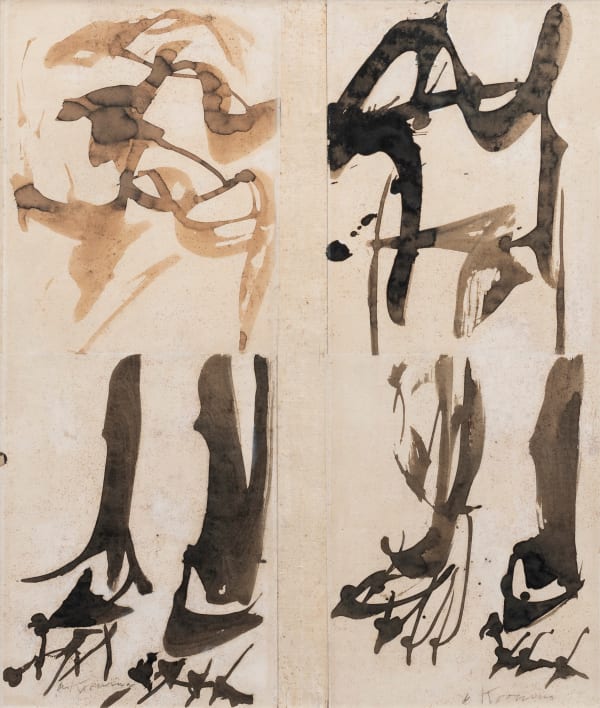Willem de Kooning 1907-1997
Please contact the gallery for other works available by this artist.
As a leading artist of the Abstract Expressionist movement, Willem de Kooning is known as one of the creative masters of the 20th century. He moved to the United States in 1926 when he was 19. From 1935 to 1937, de Kooning was chosen with 37 other artists to make 105 murals for the New York World's Fair. A year later, he accepted an apprentice, Elaine Fried, who was also an Abstract Expressionist artist. The pair married in 1943. Along with contemporaries Jackson Pollock, Mark Rothko, Robert Motherwell, Clyfford Still, Hans Hoffman and Arshile Gorky, de Kooning founded the New York School, an informal group of poets, painters, dancers and musicians active in the 1950s and 1960s.
De Kooning created his own style, drawing inspiration from Picasso's Cubism and Miró's Surrealism. He is best-known for his series of abstract women. He discovered that he understood the image more clearly through the gestural process of breaking down images. At first, critics dismissed the paintings as images of dismembered female parts, but the public later came to understand how de Kooning explored the female body in painting and sculpture as a deity, fertility goddess and erotic symbol.
After de Kooning's death in 1997, his daughter established the Willem de Kooning Foundation, which exhibits his works and acts as a platform for research and educational programs relating to the artist. De Kooning's first major sale was Pink Ladies, which sold for $3.6 million in 1987. Two years later Interchange (1955) sold for $20.6 million. In 2006, Women III (1951-1953) sold for a record $137.5 million.
Willem de Kooning's work is featured in the permanent collections of the Solomon R. Guggenheim Museum, the MoMA, the Metropolitan Museum of Art, the Whitney Museum of American Art, the Art Institute of Chicago, the Hirshhorn Museum and Sculpture Garden in Washington, D.C., the Walker Art Center in Minneapolis, the Carnegie Museum in Pittsburgh, the Stedelijk Museum in Amsterdam, the Tate Gallery in London and the Australian National Gallery in Canberra.
Related Categories: Action Painting, Black Mountain College, New York School, Abstract Expressionism, Art of the 1960s, Post-War American Art, Large Brushstrokes/Loose Brushwork, Gestural, Splattered/Dripped, Impasto.




